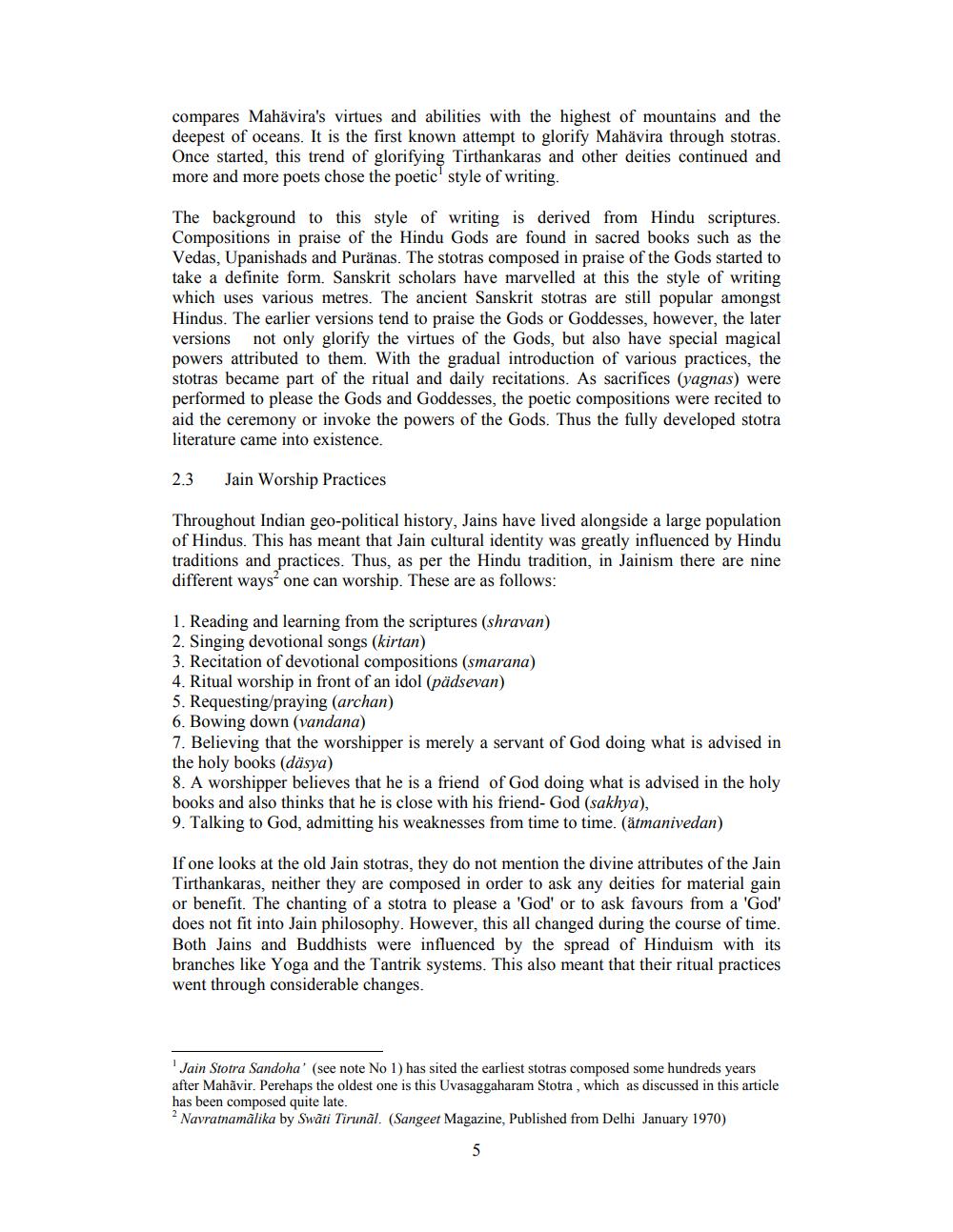________________
compares Mahävira's virtues and abilities with the highest of mountains and the deepest of oceans. It is the first known attempt to glorify Mahävira through stotras. Once started, this trend of glorifying Tirthankaras and other deities continued and more and more poets chose the poetic' style of writing.
The background to this style of writing is derived from Hindu scriptures. Compositions in praise of the Hindu Gods are found in sacred books such as the Vedas, Upanishads and Puränas. The stotras composed in praise of the Gods started to take a definite form. Sanskrit scholars have marvelled at this the style of writing which uses various metres. The ancient Sanskrit stotras are still popular amongst Hindus. The earlier versions tend to praise the Gods or Goddesses, however, the later versions not only glorify the virtues of the Gods, but also have special magical powers attributed to them. With the gradual introduction of various practices, the stotras became part of the ritual and daily recitations. As sacrifices (vagnas) were performed to please the Gods and Goddesses, the poetic compositions were recited to aid the ceremony or invoke the powers of the Gods. Thus the fully developed stotra literature came into existence.
2.3 Jain Worship Practices.
Throughout Indian geo-political history, Jains have lived alongside a large population of Hindus. This has meant that Jain cultural identity was greatly influenced by Hindu traditions and practices. Thus, as per the Hindu tradition, in Jainism there are nine different ways2 one can worship. These are as follows:
1. Reading and learning from the scriptures (shravan)
2. Singing devotional songs (kirtan)
3. Recitation of devotional compositions (smarana)
4. Ritual worship in front of an idol (pädsevan)
5. Requesting/praying (archan)
6. Bowing down (vandana)
7. Believing that the worshipper is merely a servant of God doing what is advised in the holy books (däsya)
8. A worshipper believes that he is a friend of God doing what is advised in the holy books and also thinks that he is close with his friend- God (sakhya),
9. Talking to God, admitting his weaknesses from time to time. (armanivedan)
If one looks at the old Jain stotras, they do not mention the divine attributes of the Jain Tirthankaras, neither they are composed in order to ask any deities for material gain or benefit. The chanting of a stotra to please a 'God' or to ask favours from a 'God' does not fit into Jain philosophy. However, this all changed during the course of time. Both Jains and Buddhists were influenced by the spread of Hinduism with its branches like Yoga and the Tantrik systems. This also meant that their ritual practices went through considerable changes.
Jain Stotra Sandoha' (see note No 1) has sited the earliest stotras composed some hundreds years after Mahavir. Perehaps the oldest one is this Uvasaggaharam Stotra, which as discussed in this article has been composed quite late.
2 Navratnamalika by Swati Tirunal. (Sangeet Magazine, Published from Delhi January 1970)
5




